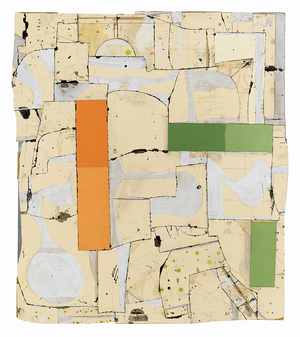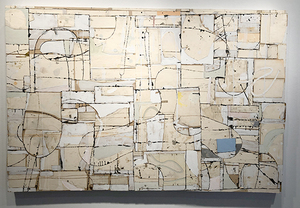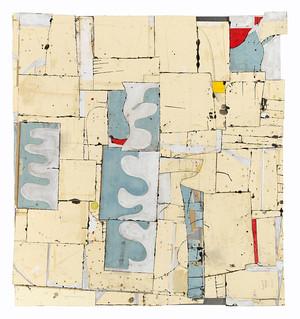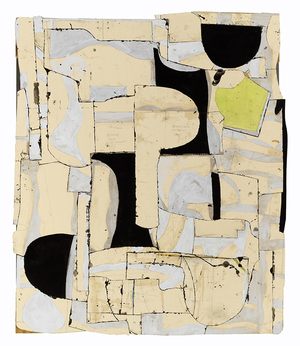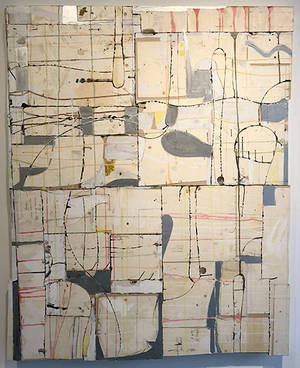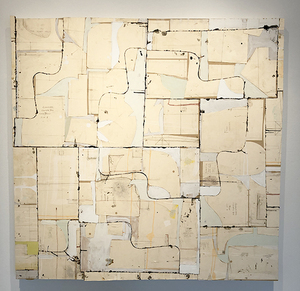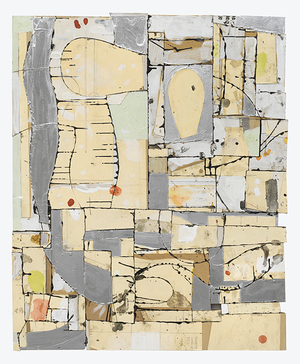
Gordon Powell: Stray Cats
Gordon Powell’s assemblages are the epitome of abstraction, with shapes and tones composed according to the artist’s own intuitive combination of visual tension and harmony —an all-over-ness occupying that sweet spot where form is free from representation. Powell is a master of improvisation, so it’s a striking contradiction that this newest collection in “Stray Cats,” eight works of paper, paint, wood and glue, begins with guidelines, quite literal ones. The Manila paper collage pieces bear handwritten arrows and annotations, and shapes delineated with someone else’s sure-handed graphite marks. These are patterns: pages of flat forms to be cut-out and constructed into a three-dimensional whole. It’s not important what the patterns were intended to become; Powell merely uses them as his stimulus, subsequently obliterating them during his process.
Fragments are the driving force for Powell. He begins with the patterns and the fragments illustrated within them, painting in the negative space, adhering them to boards that are then subject directly to the jigsaw, cut into new fragments, and recombined like so many mismatched puzzle pieces. While Powell works toward an instinctive aesthetic harmony, he also throws in a wrench. Now and again, two painted and collaged boards are stacked upon each other and cut simultaneously, resulting in matching edges upon which to swap the halves of two different compositions: the top one planned, the bottom one a serendipitous new complication for the artist to problem-solve.
Back and forth, Powell breaks things apart and puts them back together, the binding proving to be especially crucial, structurally and conceptually. For over 15 years, Powell has used dyed glue, a practice that serves so many purposes: as a physical binder; as linework highlighting the artist’s gesture in his freehand jigsaw cuts; as evidence of the improvisational making process, with drips flowing in every direction. Together, these combined meanings create an allegory —that something strong and secure can follow randomness, chaos and fragmentation, and can in fact be absolutely exquisite in its scars and its imperfections.
—Robin Dluzen Artist & Critic, 2019
